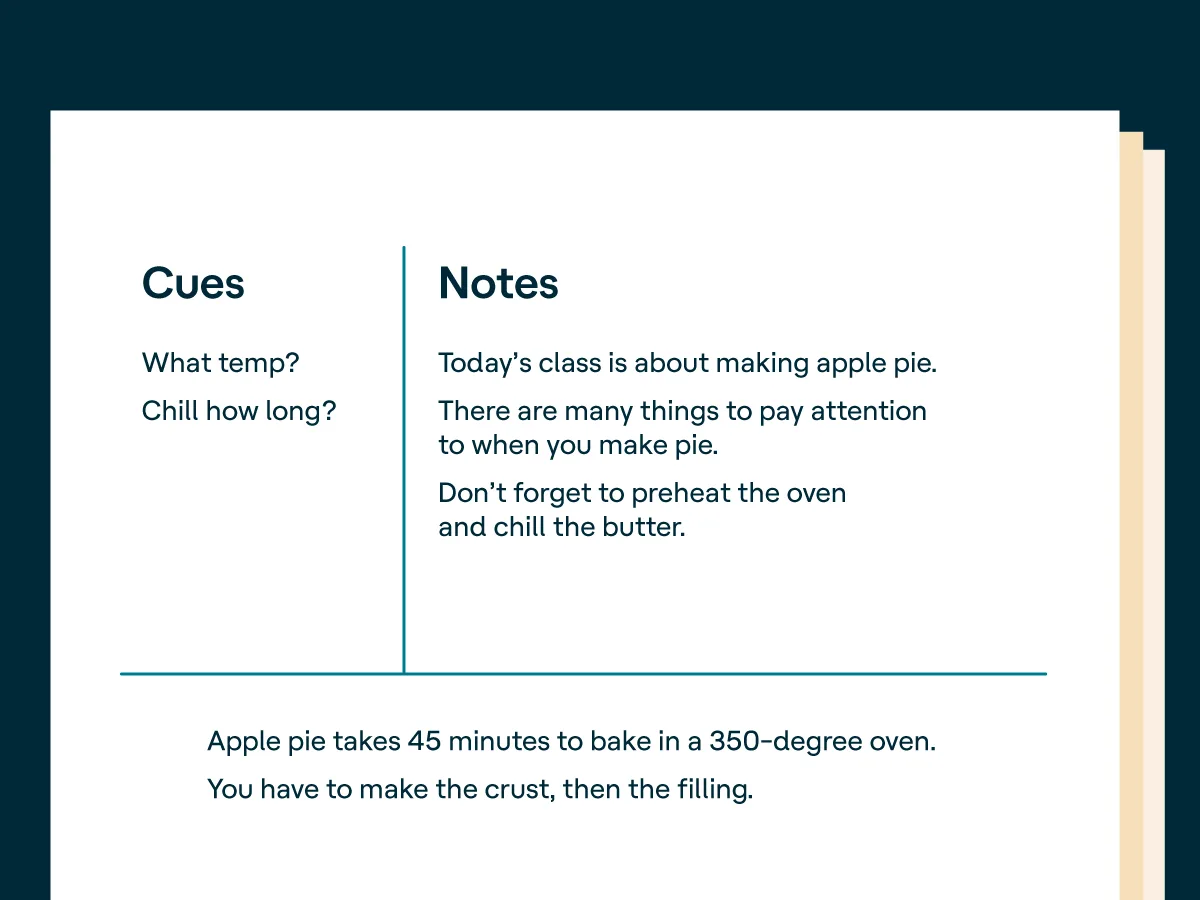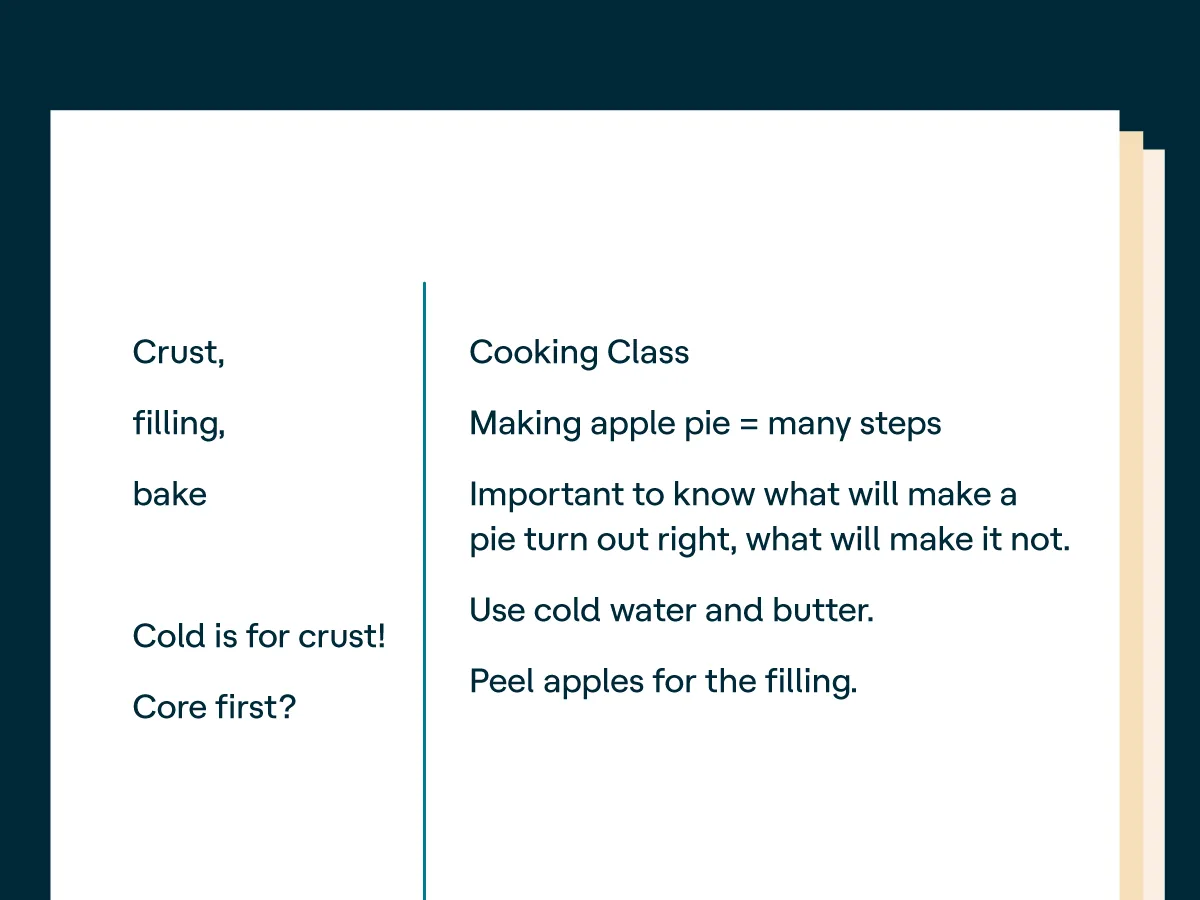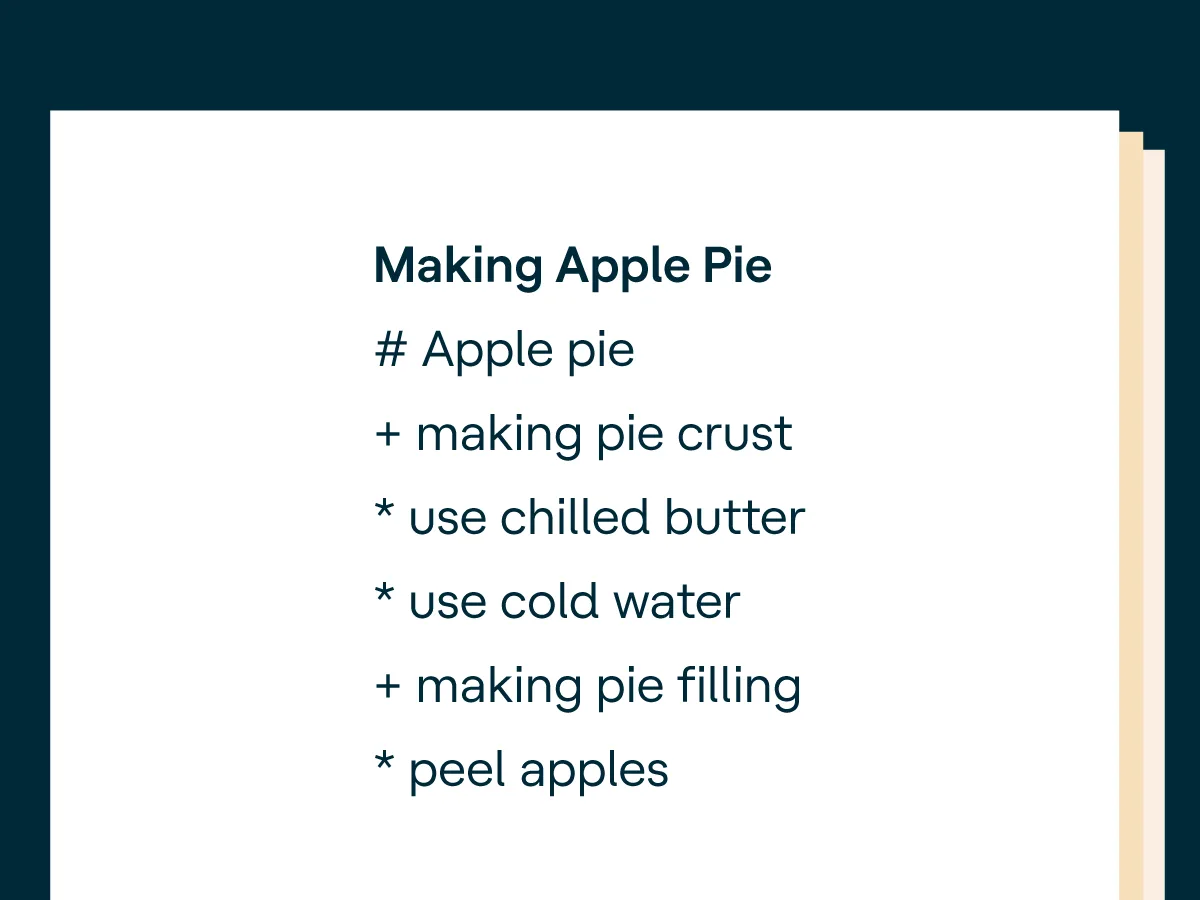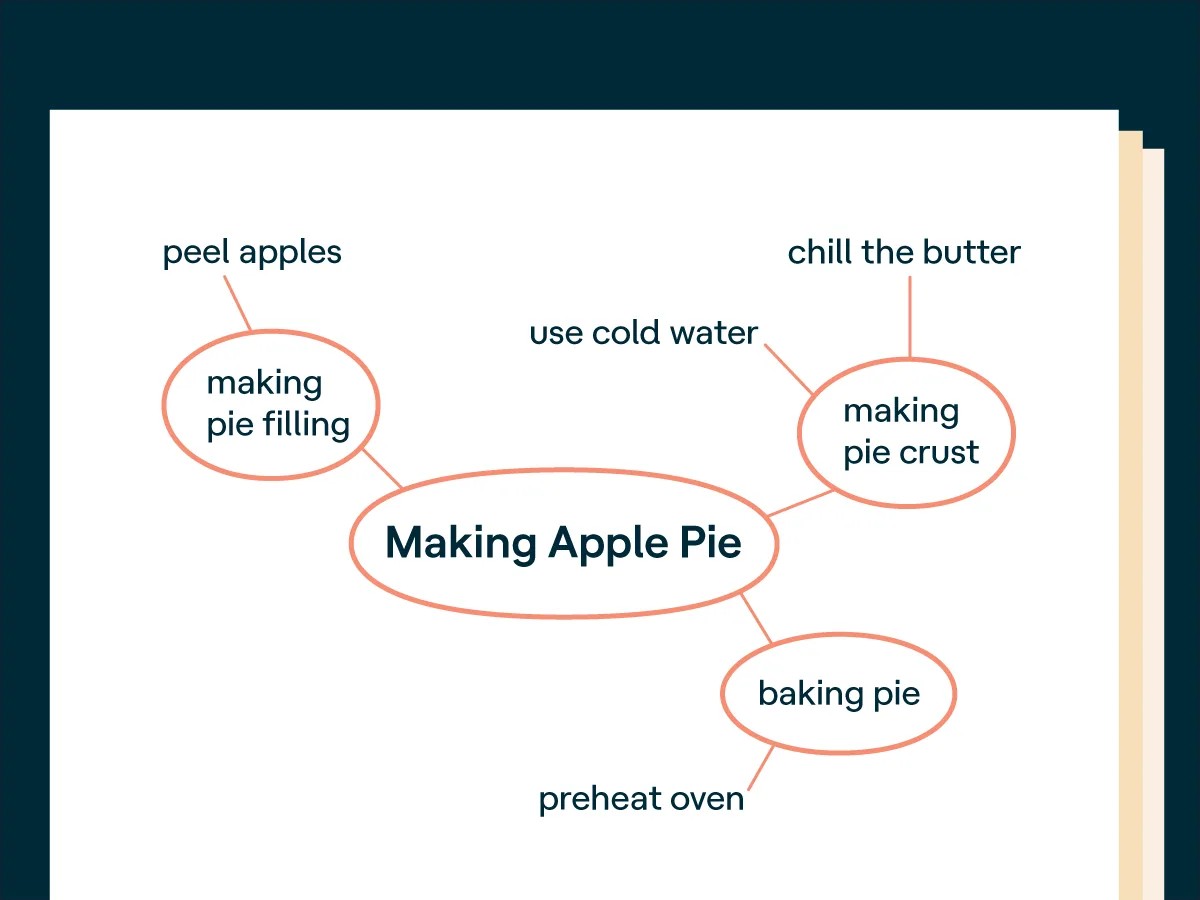5 simple strategies for note-taking
Unsure how to take notes effectively? Note-taking doesn’t come easily to all people, especially those who have trouble with executive function. Here are five simple note-taking strategies to try.
1. The split-page method of note-taking (the Cornell method)

This method splits the page into three sections: a narrow column, a wide column, and a box on the bottom. First, draw a horizontal line across the page two inches from the bottom. Then about two inches from the left side, draw a line from the top down to the horizontal line.
Use the wide column to write down the main points. After taking those notes, write questions and key vocabulary in the narrow column. Finally, add a summary of the notes in the box at the bottom.
2. The 2-6 method of note-taking

Start by writing the name of the activity and the date on the top of the page. Then, make two columns on the page — one that’s two inches wide and one that’s six inches wide. (With notebook paper, trace the vertical line on the left side to make the two columns.)
The wide column is for taking notes during the activity. Afterward, review the notes and write the most important points in the narrow column.
3. The outline method of note-taking

The outline method divides notes into main ideas, subtopics, and details. This helps with figuring out how important each fact or idea is.
Begin on the left side of the page and write down the first main idea. Then, list subtopics under the main idea, leaving room to add details about each one.
4. The bullet point method of note-taking

This method for taking notes is similar to the outline method, but not as structured. Choose a symbol to use before a main idea (such as #). Then use another symbol for subtopics (such as +) and one for supporting details (such as *). The symbols show which ideas fit together and how.
5. The mapping method of note-taking

The mapping method is a great system for people who like to organize their thoughts visually. Start by writing words, phrases, or main ideas anywhere on the page. Then draw lines to connect things that go together.
Afterward, review the notes to see how a main idea leads to a subtopic, and then to the supporting details.
These five note-taking methods can also work on digital devices. Learn more about how to use apps for note-taking.


